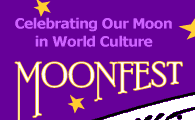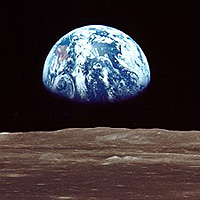


|
||||||||||||||||||||||||||||||||||||||||||||||
|
MOONFEST MOONBEANS MOONFEST Moonbeans Parent-Child Workshops™ offer high-quality, guilt-free programming for parents and their young children. Adults and children are divided into two groups, and will meet together at the first, pre-lunch, and final sessions of the day for theater games, relaxation exercises, group singing or vocalizations.
For adults who want to develop and explore their creativity, we offer MOONFEST HOWL WORKSHOPS™ for inspiration, information and hands-on activities. Enjoy yourself. Make stuff. Be a kid again. Share this website on social media and via email! Tweet |
|
During "MOONFEST Moonbeans" Parent-Child Workshops, every child will be given crescent-shaped beans to paint. Their parents will be given a small jar and a "MOONFEST Moonbeans" label to decorate. At the end of Day 1, the kids will fill the jars painted by their parents with their own bean creations. |

Earthrise from the moon, taken
on the Apollo 11 mission
Source: NASA
|
Our moon rotates at almost the same speed Earth does. That's why we always see the same face. The moon is hardly "inconstant," as Shakespeare saw it, nor is there a "dark side." The moon seems changeable because of its phases, and it seems to have a dark side because the "other side" wasn't visible to us until space exploration made that possible. |